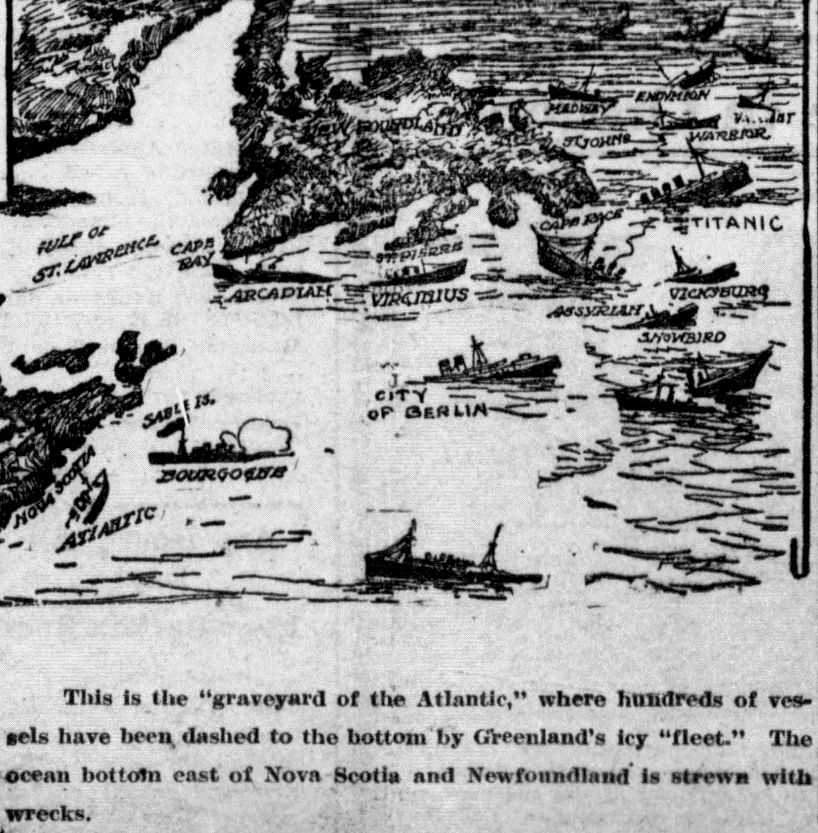Graveyard of the Atlantic
Collisions with icebergs has brought grieve to many vessels. Sinking of the Titanic recalls other disasters. The appaling catastrophy which befell the White Star Liner Titanic when she was sunk in collision with an iceberg off Cape Race, with the loss of more than 1,500 lives, is the greatest of all ocean disasters.
Of former collisions of steamships with icebergs the last before that of the Niagara, reported about the same time as the Titanic tragedy, was the encounter of an iceberg by the Anchor Liner Columbia from Glasgow, on August 2, 1911. The collision occured an a dense fog, when the Columbia was 180 miles north and 57 miles east of Cape Race. Several members of the crew and one passenger were injured. On Jly 8, 1907, the North German Lloyd Liner Kronprinz Wihelm struck an iceberg off the banks in the uncertain light of early morning. The steamship Volturno, on her way to New York from Rotterdam, also had a narrow escape from an iceberg in May 1909, when, off the coast of Newfoundland, she ploughed her way into an ice field.
The giant freighter of the White Star Line Naronic, which dissapeared from the eastward winter track across the Atlantic some time after February 11, 1899, with seventy persons on aboard, is also believed to have encountered an iceberg and to have gone down in collision with it. Her overturned lifeboats were found floating derelicts long afterward 300 miles off Newfoundland. In August 1899, the Donoldson Liner Concordia, a cattle steamer, outward bound from Montreal collided with a berg in the Belle isle strait off the Newfoundland coast. Farther back, there was the disaster to the old Guion Line steamship Arizona on November 7, 1879. She crashed into a berg off the Newfounland banks and immediately began to sink at the bow. No lives were lost.
